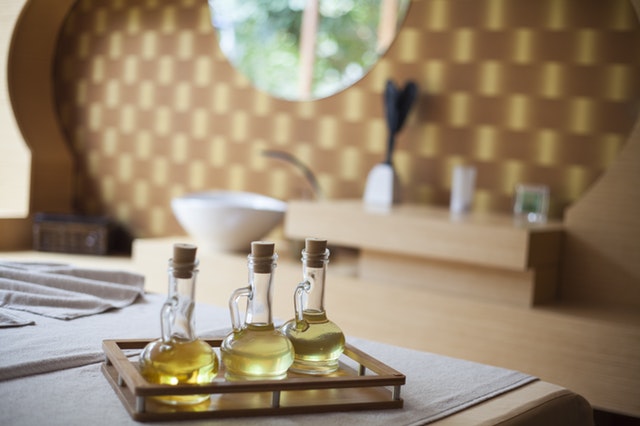[vc_row][vc_column][vc_column_text]
Top 7 Home Remedies for Skin Rashes
If you are like me who jumps to natural and home remedies whenever a skin related issue crops up, you probably have witnessed your fair share of side-effects from some of those over-the-counter products. Skin rashes are pretty common occurrence and can be attributed to multiple factors such as food allergies, excessively dry skin and certain autoimmune conditions.
Whatever be the reason, it’s good to know about some home remedies that can be applied right from the comfort of home, without stressing about any harmful effect that could worsen the condition.
1. Baking Soda
Who knew this readily available ingredient in kitchen could help you get rid of annoyingly painful skin rashes? In fact, it has been found to be extremely effective in alleviating inflammation and itching caused by skin rashes and expedite the healing process.
How to use it?
Mix one part baking soda into three parts water to develop a dab-on paste and apply only on the affected skin every day. You can also add some coconut oil to the mixture which is equally effective.
2. Essential Oils
Well, we all have heard about the amazing benefits of essential oils in treating so many diverse conditions, such as cold & flu, aging, digestion and skin related concerns. For skin rashes, you can use tea tree oil, lavender oil or eucalyptus oil, along with carrier oils.
How to use it?
Mix 12 drops of any of essential oils into 30ml of jojoba or coconut oil (carrier oils) and apply on the affected areas. It is recommended to do this at least once every day, preferably before you go to bed.
A word of caution: Never use essential oils directly on the skin. Since they are extremely concentrated, it is recommended to dilute them with carrier oils before applying.
3. Aloe Vera
This one is a real gem when it comes to curing skin conditions due to its incredible anti-inflammatory, antifungal, emollient and antibacterial properties. It will certainly reduce the redness and itchiness, thus speeding up the healing. Use fresh aloe leaves plucked right from the plant, if possible, though you can also buy aloe vera extract or gel to serve the purpose.
How to use it?
Apply it directly on the affected skin area at least three times a day.
4. Ice-cubes Compress
That’s right, as simpler it may sound, ice-cube pack can help a great deal in reducing the skin rash occurred due to insect bites, heat, shingles or poison ivy. The cold compress is particularly useful when rash starts to turn into painful blisters.
How to use it?
Use an ice pack or put ice cubes in a plastic bag and rub gently on the area for a few minutes. Or you can simply soak a clean washcloth in cold water and put it onto the fiery rash for at least five minutes.
A word of caution: Avoid rubbing the ice cubes directly on your skin.
5. Apple Cider Vinegar
In case the rashes are caused by dry skin, for example by dandruff or a sunburn, apple cider vinegar can do wonders in easing the condition. Try to get your hands on the raw, unfiltered, organic variety as it has been found to be an effective antifungal, antibacterial and antiseptic agent that alleviates itching.
What’s more, it’s been also proven to be beneficial in killing fungus caused due to certain kinds of ringworm and eczema.
How to use it?
Put a few drops of apple cider vinegar onto a clean washcloth or cotton pad and apply to the affected area.
6. Chamomile
It’s calming and soothing, and can help relieve the itching while reducing inflammation. Whether you have an occasional skin irritation or bug bites, chamomile can help.
How to use it?
Soak a cotton pad in chamomile tea and put it on the skin rash as compress. You can also add a few drops of carrier oil like coconut oil into the chamomile tea for dilution purposes.
7. Grapefruit Seed Extract
Loaded with bioflavonoids that contain excellent anti-inflammatory and antimicrobial properties, diluted grapefruit seed extract deserves to be in this list, and rightfully so. It reduces the swelling and helps remedy the skin rashes.
How to use it?
Take a few drops on your fingers and apply directly on the skin. Let it be absorbed fully by the skin before you wash it off. You can apply it two times a day for effective results.
Precaution: Keep a close watch on the severity of condition!
Though above mentioned home remedies for skin rashes have proven to be extremely helpful, it’s equally important to be aware of the acuteness of symptoms and seek medical attention in the event the condition persists longer than a few days. Some signs that require immediate professional help include fever, increased discoloration of the affected area, dizziness, severe neck pain, difficulty in breathing or swelling of face. All these symptoms may be the onset of some other serious medical conditions, so contact your doctor as soon as possible in such cases.
[/vc_column_text][/vc_column][/vc_row]

